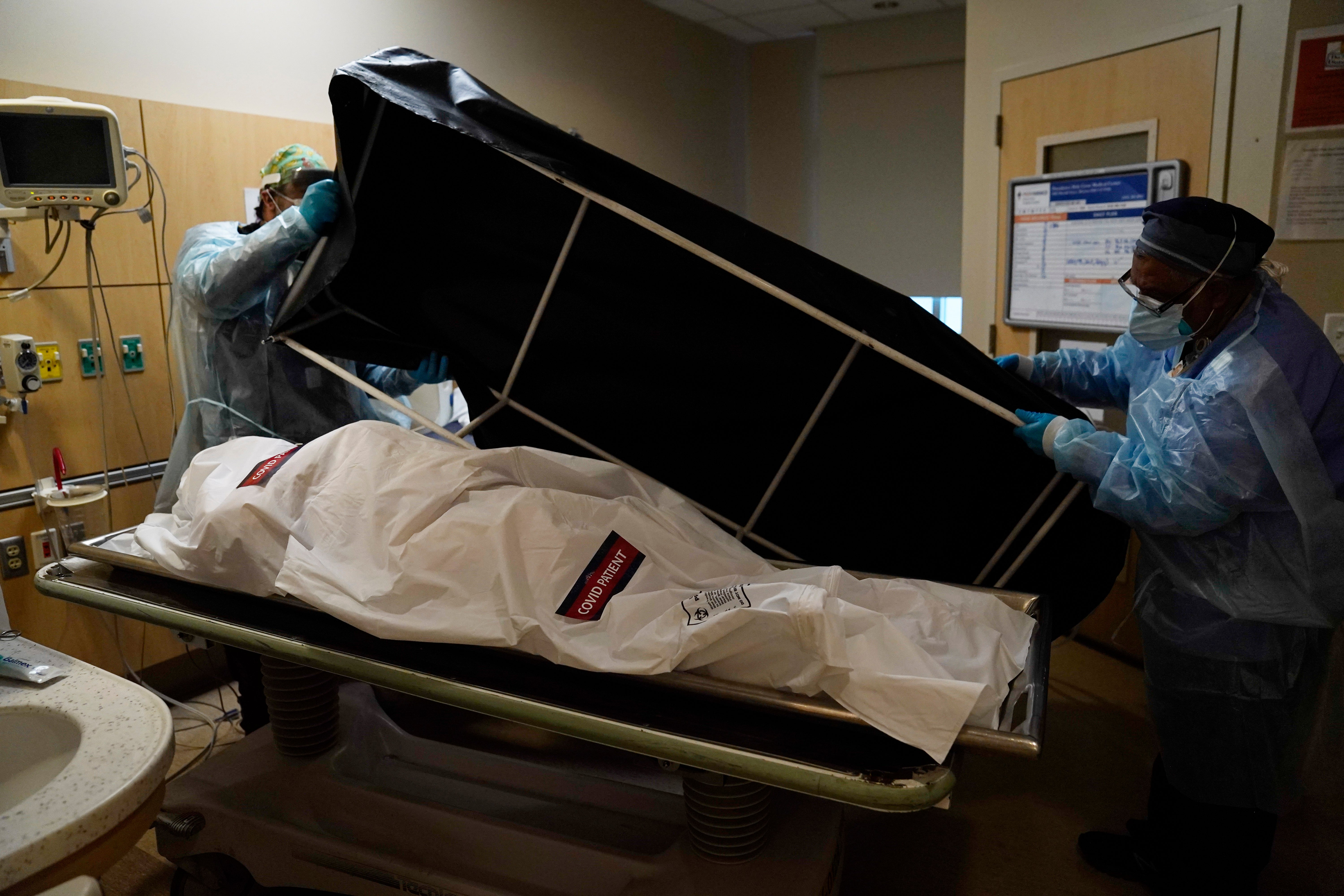US COVID-19 deaths hit 600,000, equal to yearly cancer toll
The U.S. death toll from COVID-19 has topped 600,000, even as the vaccination drive has slashed daily cases and deaths and allowed the country to emerge from the gloom

Your support helps us to tell the story
From reproductive rights to climate change to Big Tech, The Independent is on the ground when the story is developing. Whether it's investigating the financials of Elon Musk's pro-Trump PAC or producing our latest documentary, 'The A Word', which shines a light on the American women fighting for reproductive rights, we know how important it is to parse out the facts from the messaging.
At such a critical moment in US history, we need reporters on the ground. Your donation allows us to keep sending journalists to speak to both sides of the story.
The Independent is trusted by Americans across the entire political spectrum. And unlike many other quality news outlets, we choose not to lock Americans out of our reporting and analysis with paywalls. We believe quality journalism should be available to everyone, paid for by those who can afford it.
Your support makes all the difference.The U.S. death toll from COVID-19 topped 600,000 on Tuesday, even as the vaccination drive has drastically brought down daily cases and fatalities and allowed the country to emerge from the gloom and look forward to summer.
The number of lives lost, as recorded by Johns Hopkins University, is greater than the population of Baltimore or Milwaukee. It is about equal to the number of Americans who died of cancer in 2019. Worldwide, the COVID-19 death toll stands at about 3.8 million.
The real totals in the U.S. and around the globe are thought to be significantly higher, with many cases overlooked or possibly concealed by some countries.
The milestone came the same day that California the most populous state and the first to impose a coronavirus lockdown, lifted most of its remaining restrictions and ushered in what has been billed as its “Grand Reopening” just in time for summer.
Gone are state rules on social distancing and limits on capacity at restaurants, bars, supermarkets, gyms, stadiums and other places. Disneyland is throwing open its gates to all tourists after allowing just California residents. Fans will be able to sit elbow-to-elbow and cheer without masks at Dodgers and Giants games
“Deep down I want to rejoice,” said Rita Torres, a retired university administrator in Oakland, California. But she plans to take it slow: “Because it’s kind of like, is it too soon? Will we be sorry?”
Elsewhere around the country, states continued to move closer to normal, step by step. Massachusetts officially lifted its state of emergency Tuesday, though many restrictions had already been eased, including mask requirements and limits on gatherings.
With the advent of the vaccine in mid-December, COVID-19 deaths per day in the U.S. have plummeted to an average of around 340, from a high of over 3,400 in mid-January. Cases are running at about 14,000 a day on average, down from a quarter-million per day over the winter.
President Joe Biden acknowledged the approaching milestone Monday during his visit to Europe, saying that while new cases and deaths are dropping dramatically in the U.S., “there’s still too many lives being lost,” and “now is not the time to let our guard down.”
The most recent deaths are seen in some ways as especially tragic now that the vaccine has become available practically for the asking.
More than 50% of Americans have had at least one dose of vaccine, while over 40% are fully vaccinated, according to the Centers for Disease Control and Prevention.
But demand for shots in the U.S. has dropped off dramatically, leaving many places with a surplus of doses and casting doubt on whether the country will meet Biden's target of having 70% of American adults at least partially vaccinated by July 4. The figure stands at just under 65%.
As of a week ago, the U.S. was averaging about 1 million injections per day, down from a high of about 3.3 million a day on average in mid-April, according to the CDC.
At nearly every turn in the outbreak, the virus has exploited and worsened inequalities in the United States. CDC figures, when adjusted for age and population, show that Black, Latino and Native American people are two to three times more likely than whites to die of COVID-19.
Also, an Associated Press analysis found that Latinos are dying at much younger ages than other groups. Hispanic people between 30 and 39 have died at five times the rate of white people in the same age group.
Overall, Black and Hispanic Americans have less access to medical care and are in poorer health, with higher rates of conditions such as diabetes and high blood pressure. They are also more likely to have jobs deemed essential, less able to work from home and more likely to live in crowded, multigenerational households.
The first known deaths from the virus in the U.S. were in early February 2020. It took four months to reach the first 100,000 dead. During the most lethal phase of the disaster, in the winter of 2020-21, it took just over a month to go from 300,000 to 400,000 deaths.
With the crisis now easing, it took close to four months for the U.S. death toll to go from a half-million to 600,000.